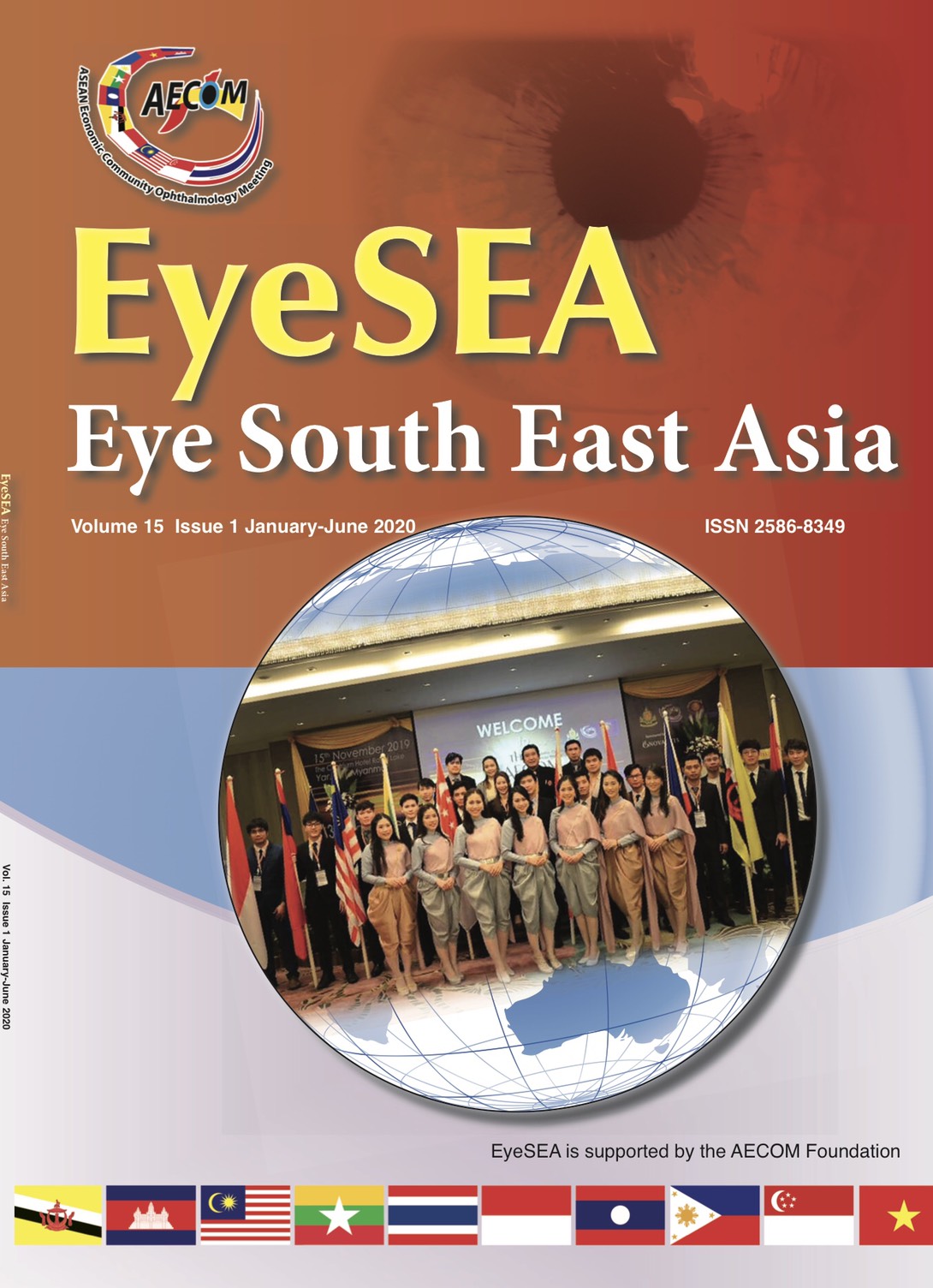Prognostic Factors for Successful Surgical Outcome in Canaliculi Repairs
Main Article Content
Abstract
Abstract
Objective: To investigate the prognostic factors that contribute to successful surgical outcome in canaliculi repairs from accidents, in terms of anatomic and function of nasolacrimal duct, at Thammasat University Hospital.
Research design: Retrospective, descriptive study
Methodology: Research medical records for patients involved in accidents at nasolacrimal duct and lid tear, which received canaliculi repairs and lid repairs under general anesthesia during the duration of five years, from 2012 to 2017, by using E-phis program at Thammasat University Hospital and follow up for one year.
Results: Based on the data collected in the past five years, there were 54 patients involved in accidents at nasolacrimal duct and lid tear and subsequently received canaliculi repairs and lid repairs with bi-canaliculi stent. However, 39 patients were selected for the study, as data were complete. It was found that the material used in the canaliculi and lid repairs have a diameter of more than 0.7 mm, which is a statistically significant important prognostic factor for successful surgical outcome (p <0.05), where the ratio of Ml 20 (57.14) (p=0.047) and Ml 20 (58.82)(p=0.020), respectively.
Furthermore, achieving canaliculi repairs in an anatomically correct position not only contributes to cosmetic effect, but is also a statistically significant important prognostic factor for successful surgical outcome (p<0.05). Similarly, ophthalmologists directly performing the surgeries also contribute to a statistically significant better results when compared to residents (p<0.05).
Conclusion: The selection of materials for canaliculi and lid repairs with diameters larger than 0.7 mm is an important prognostic factor that contribute to successful surgical outcome in canaliculi repairs. In addition, the position of the lid following the repairs as well as experience from ophthalmologists are also contributing factors for success.
Keywords: Ml (large non-absorbable material), canaliculi repair, bi-canaliculi stent, lid repair
Article Details
References
2. Mehdi Tavakoli; Sayeh Karimi; Bahareh Behdad; Setareh Dizani; Hossein Salour Traumatic Canalicular Laceration Repair with a New Monocanalicular Silicone Tube Ophthalmic Plastic and Reconstructive Surgery. 2017 Jan/Feb33(1):27–30,
3. Ai Zhuang, MD, Xiaoliang Jin, MD, Yinwei Li, MD, Xianqun Fan, MD, PhD et al A new method for locating the proximal lacerated bicanalicular ends in Chinese preschoolers and long-term outcomes after surgical repair Medicine (Baltimore). 2017 Aug; 96(33): e7814
4. Yen-Chang Chu; Shu-Ya Wu; Yueh-Ju Tsai; Yi-Lin Liao; Hsueh-Yen Chu Early Versus Late Canalicular Laceration Repair Outcomes. American Journal of Ophthalmology. OCT 2017 182():155-159,
5. Aytoğan H1, Karadeniz Uğurlu Ş. Evaluation of anatomical and functional outcomes in patients undergoing repair of traumatic canalicular laceration.
Ulus Travma Acil Cerrahi Derg. 2017; 23(1): 66-71


